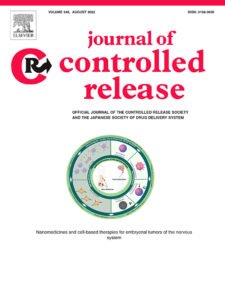Abstract

In breast cancer, the extracellular matrix (ECM) undergoes remodeling and changes the tumor microenvironment to support tumor progression and metastasis. Fibronectin (FN) assembly is an important step in the regulation of the tumor microenvironment since the FN matrix precedes the deposition of various other ECM proteins, controls immune cell infiltration, and serves as a reservoir for cytokines and growth factors. Therefore, FN is an attractive target for breast cancer therapy and imaging. Functional Upstream Domain (FUD) is a 6-kDa peptide targeting the N-terminal 70-kDa domain of FN, which is critical for fibrillogenesis. FUD has previously been shown to function as an anti-fibrotic peptide both in vitro and in vivo. In this work, we conjugated the FUD peptide with 20-kDa of PEG (PEG-FUD) and demonstrated its improved tumor exposure compared to non-PEGylated FUD in a murine breast cancer model via multiple imaging modalities. Importantly, PEG-FUD peptide retained a nanomolar binding affinity for FN and maintained in vitro plasma stability for up to 48 h. Cy5-labeled PEG-FUD bound to exogenous or endogenous FN assembled by fibroblasts. The in vivo fluorescence imaging with Cy5-labeled FUD and FUD conjugates demonstrated that PEGylation of the FUD peptide enhanced blood exposure after subcutaneous (SC) injection and significantly increased accumulation of FUD peptide in 4T1 mammary tumors. Intravital microscopy confirmed that Cy5-labeled PEG-FUD deposited mostly in the extravascular region of the tumor microenvironment after SC administration. Lastly, positron emission tomography/computed tomography imaging showed that 64Cu-labeled PEG-FUD preferentially accumulated in the 4T1 tumors with improved tumor uptake compared to 64Cu-labeled FUD (48 h: 1.35 ± 0.05 vs. 0.59 ± 0.03 %IA/g, P < 0.001) when injected intravenously (IV). The results indicate that PEG-FUD targets 4T1 breast cancer with enhanced tumor retention compared to non-PEGylated FUD, and biodistribution profiles of PEG-FUD after SC and IV injection may guide the optimization of PEG-FUD as a therapeutic and/or imaging agent for use in vivo.